[Click on images to enlarge them.]

Richard Saul Wurman points out that the Arsenale’s “Two elegant towers (rebuilt in 1686) mark the water entrance to this astonishingly large compound, the pride of the former Republic and the source of its maritime power. More than 16,000 workers could be simultaneously employed here in times of need. The Arsenale’s origins date back to the 12th century, and its fame was already high at the end of the 13th century, when Dante described its activity in a famous simile: the damned souls of corrupt politicans were tormented in Hell by immersion in a lake of boiling pitch, with the devils moving about with pointed forks just like those used by Venetian workers to caulk the hulls of their ships. The Arsenale occupies one-fifth of the city’s total acreage and is completely surrounded by crenellated walls” (161).
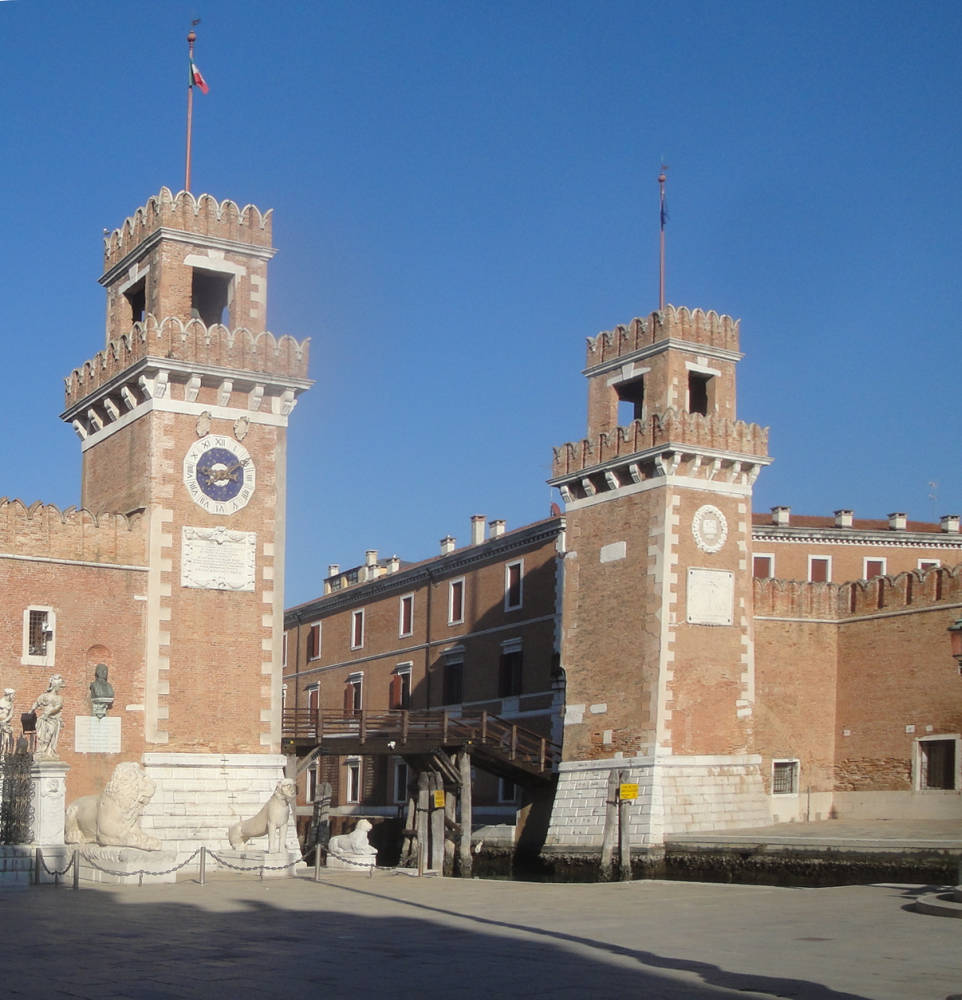
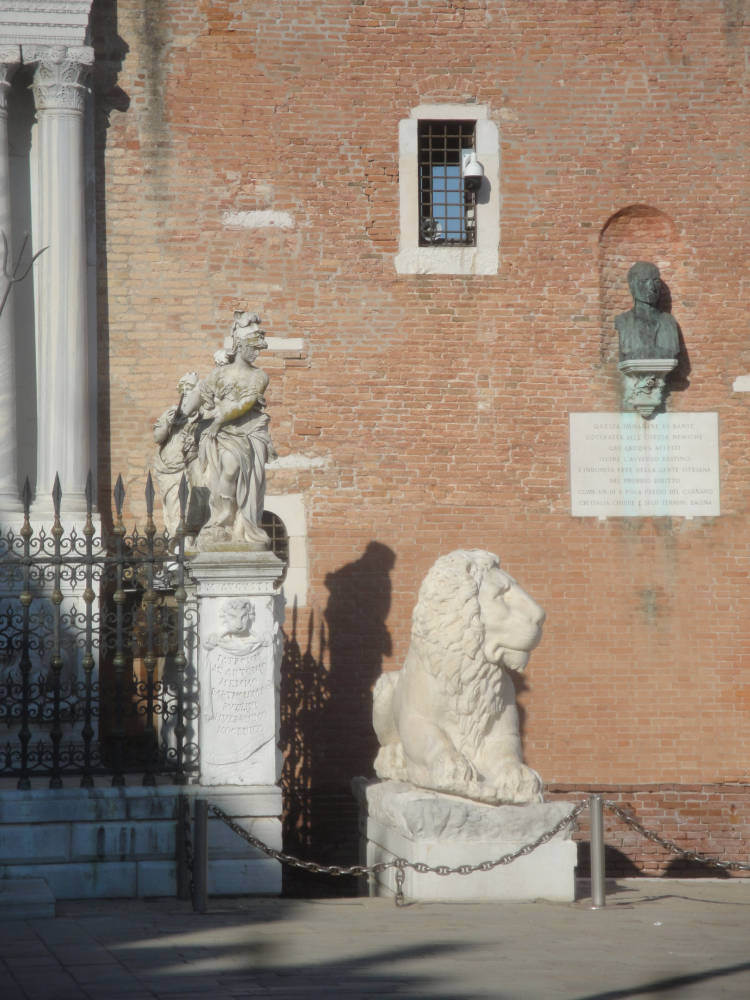
“The land entrance, on the side of the left tower, provides access through a flat bridge over a small canal. The Portal was built in 1460 by Antonio Gambello, and is the first example of the Renaissance arch in Venice. The 15th-century winged lion over the arch is attributed to Bartolomeo Bon. The two Winged Victories were added in commemoration of a great naval victory over the Turks (battle of Lepanto, 1571)” (Wurman, 161). The lion in the picture above was loot the Venetians took from Athens after a battle in 1687.
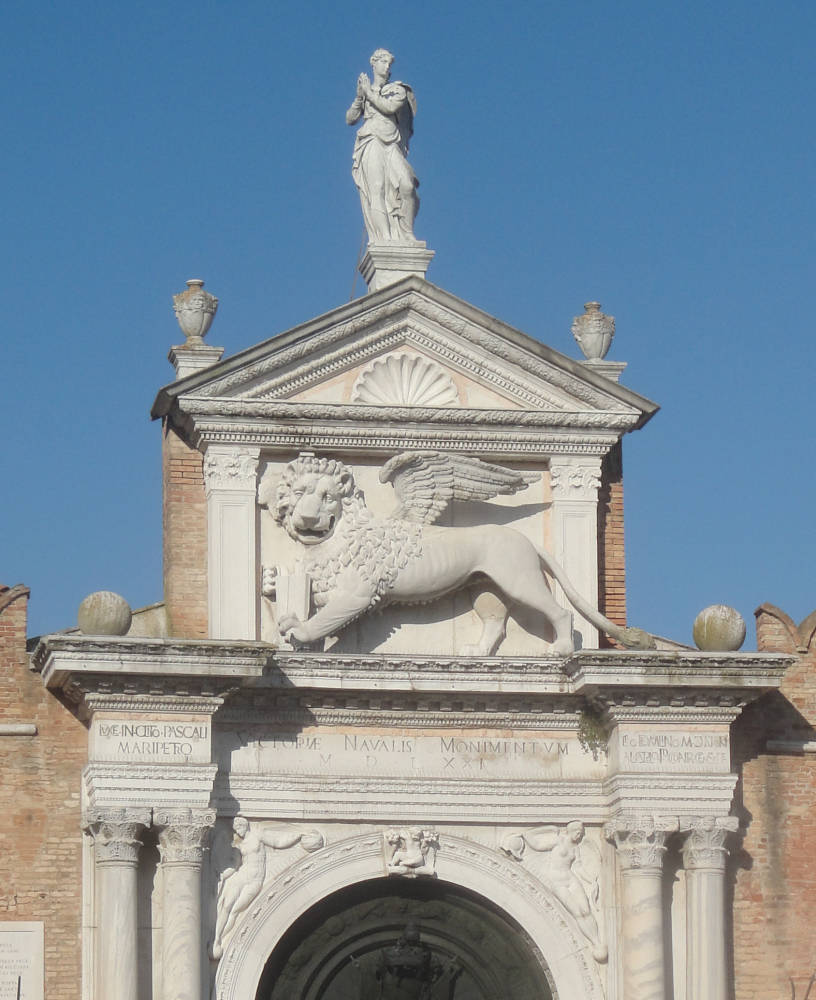
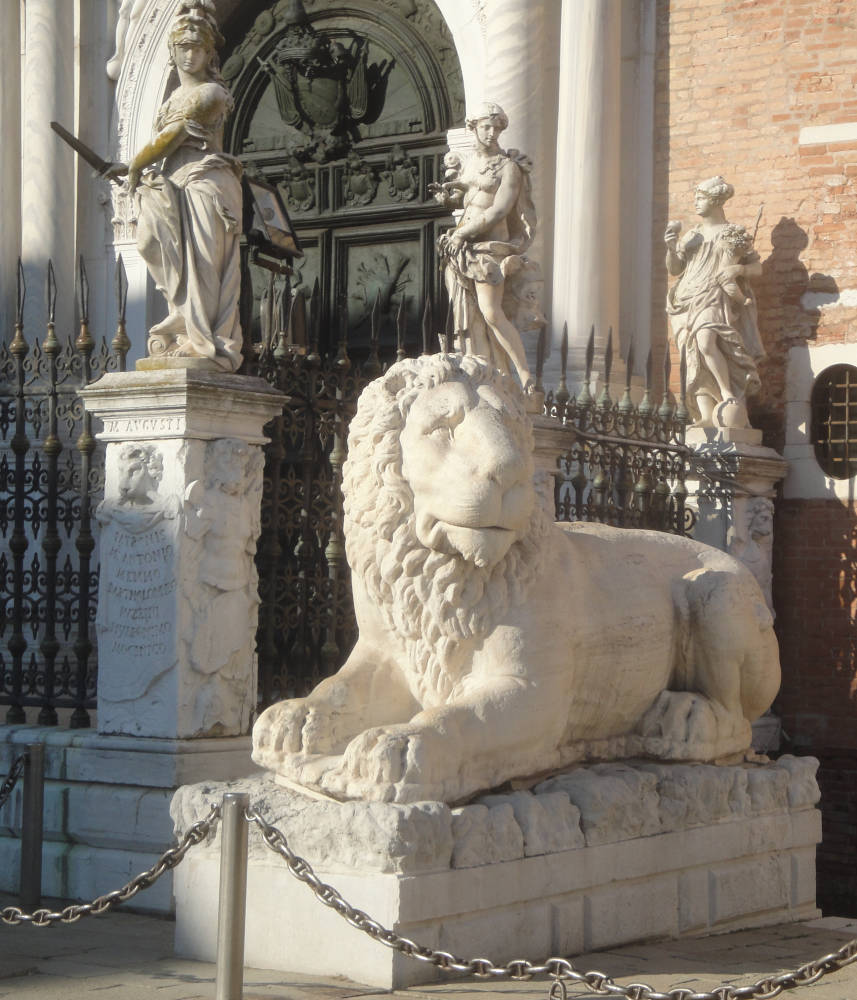
In the tourist’s guide to the city’s architecture that in the Library Ediiton appears near the end of the third volume of The Stones of Venice, Ruskin comments that the Arsenal’s “gateway is a curiously picturesque example of Renaissance workmanship, admirably sharp and expressive in its ornamental sculpture; it is in many parts like some of the best Byzantine work. The Greek lions in front of it appear to me to deserve more praise than they have received; though they are awkwardly balanced between conventional and imitative representation, having neither the severity proper to the one, nor the veracity necessary for the other.” Then, in 1877 he added, “No, there’s no good in them; they are stupid work of the Greek decadence, — mere cumber of ground: but at least decently quiet, not strutting or sprawling or mouthing like lions of modern notion. Pacific at least — not insolent lumber. The traveller who cares for Turner should look with remembering attention at the internal angle of the Arsenal canal. Turner made its brick walls one flame of spiritual fire, in his mystic drawing of them, now in our National Gallery.)” (11.362-63). The editors of the Library Edition explain, Ruskin refers to “No. 173 in the Water Colour Collection; referred to by Ruskin in the Preface to his Notes on the Turner Gallery, 1856, as ‘an excellent instance of Turnerřs later manner’” (11.363n1).
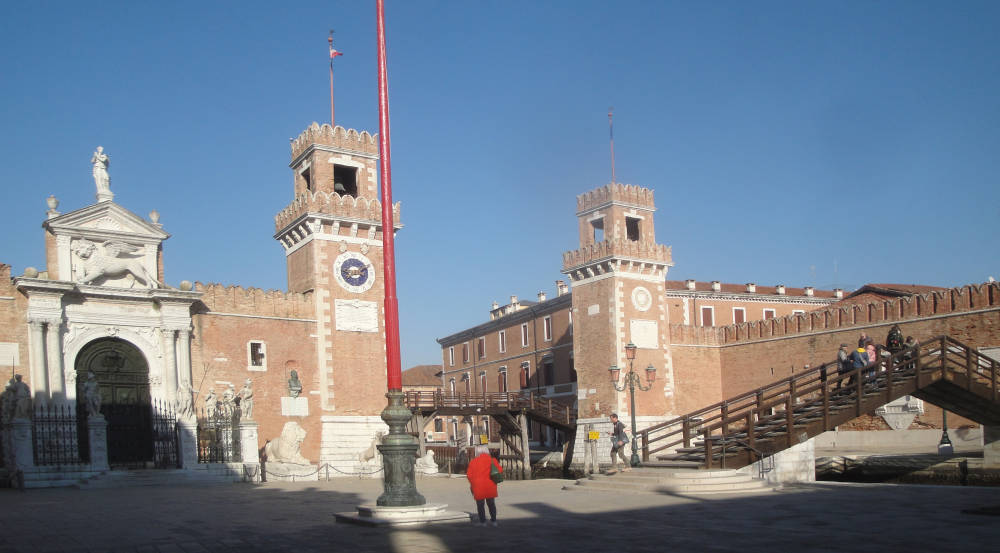
More of Ruskin's Venice
- St Mark’s Cathedral
- The Palazzo Ducale, Venice
- The Scuola de San Rocco
- Palazzi
- On the Grand Canal
- Leaving the Grand Canal
- On the way to Venice from the mainland
- Venice: Details and Corners
Photographs 2020. [You may use these images without prior permission for any scholarly or educational purpose as long as you (1) credit the photographer and (2) link your document to this URL in a web document or cite the Victorian Web in a print one.]
Bibliography
Ruskin, John. The Works. Ed. E. T. Cook and Alexander Wedderburn. “The Library Edition.” 39 vols. London: George Allen, 1903-1912.
Wurman, Richard Saul [and Patricia Schultz]. Florence Venice Milan Access. New York: HarperCollins, n.d.
� �
Last Modified 26 March 2020